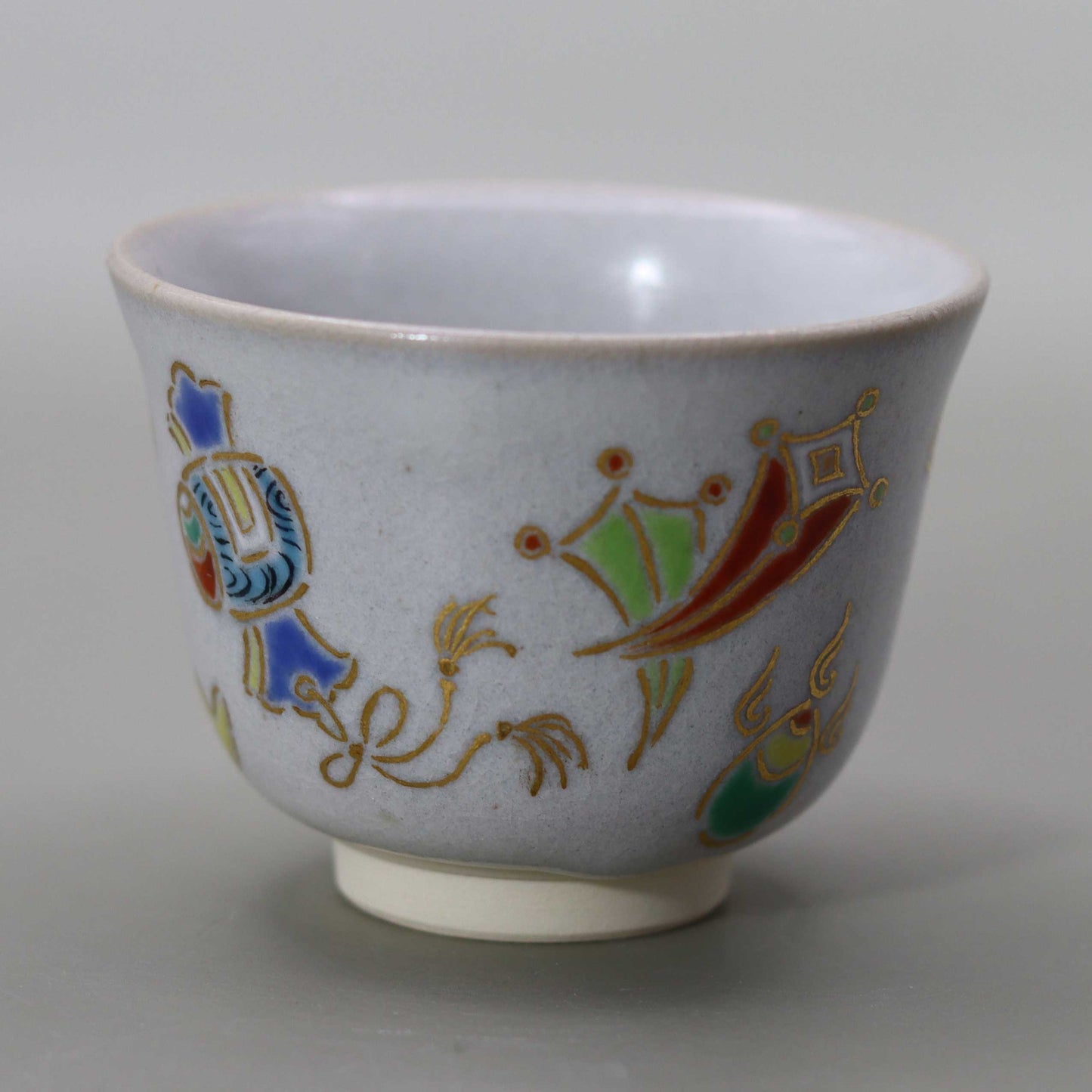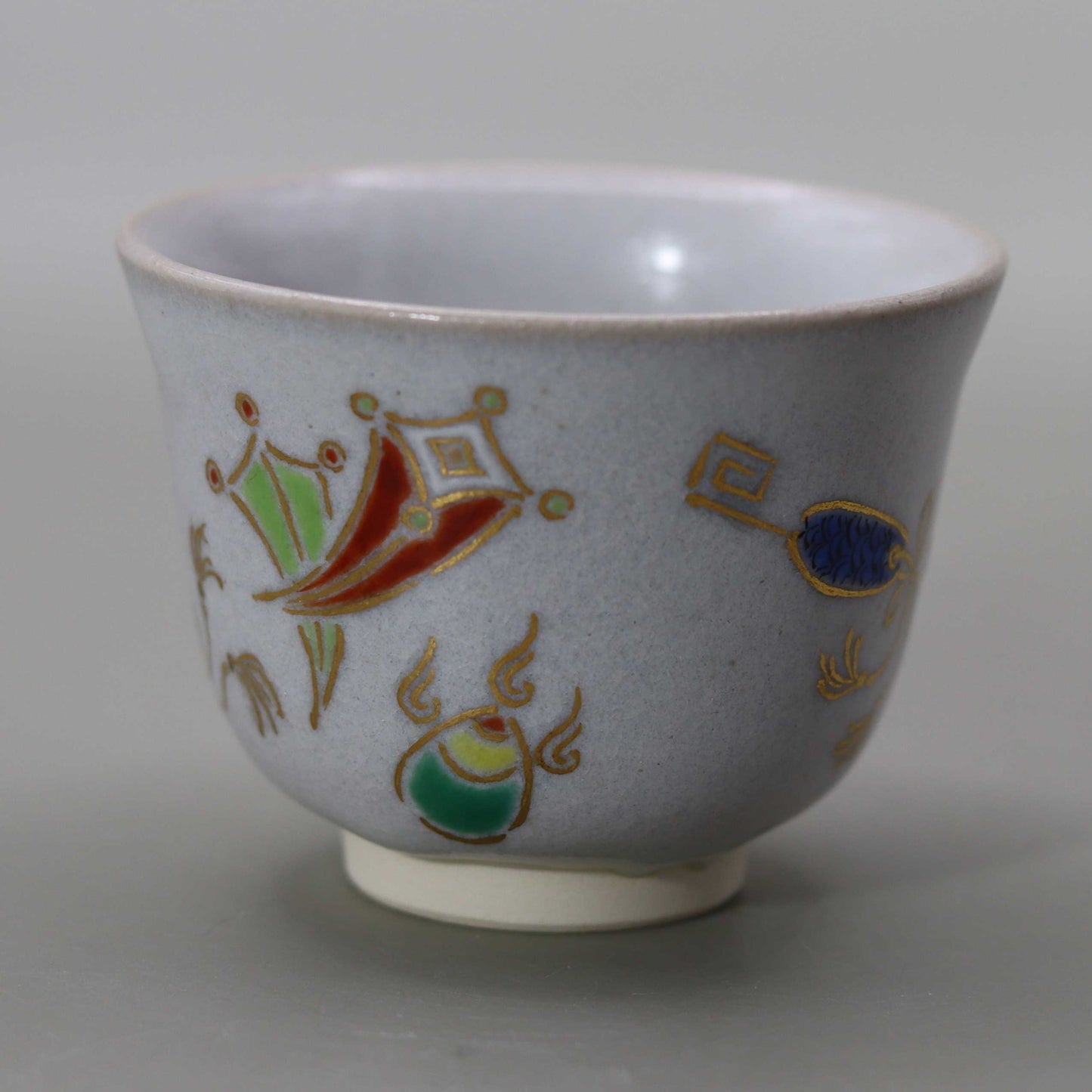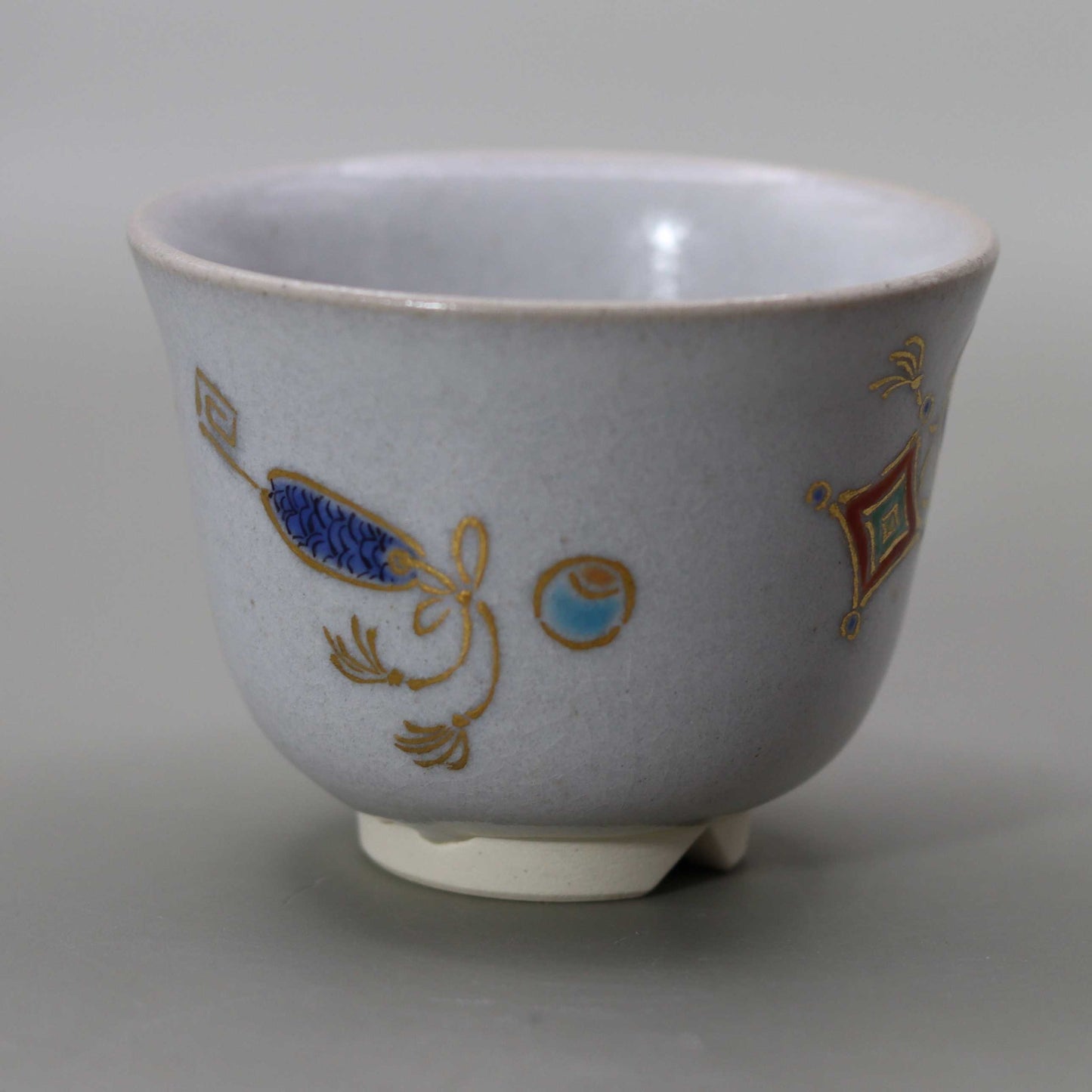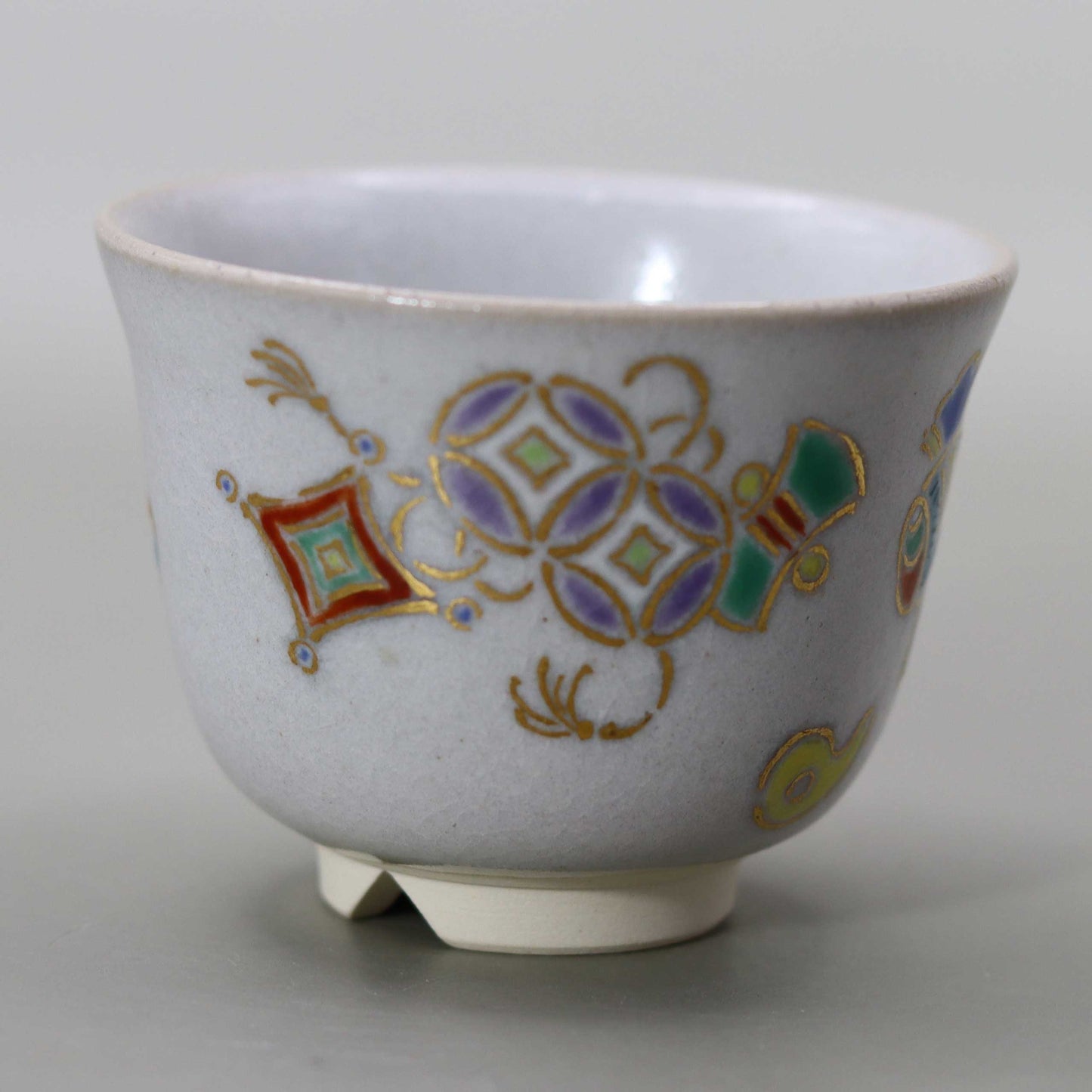Straw Ash Glazed Treasure Cup by Kosai Miyagawa
Straw Ash Glazed Treasure Cup by Kosai Miyagawa
Couldn't load pickup availability
Height: 4.5cm Width: 6.0cm
The "Wara-Ashi-Yu Treasure Cup" is a work that features the traditional Japanese auspicious pattern "Treasure All Around," depicting various treasures that bring good fortune. The Treasure All Around pattern originated from the ancient Chinese "Eight Treasures" and "Miscellaneous Eight Treasures," and was introduced to Japan during the Muromachi period, where it was adapted to Japanese style and spread. In Japan, it is often used on formal wear and tea ceremony utensils, and has become familiar to people as a symbol of good fortune.
The origin and significance of the treasure motif
The Treasure Allure motif is a collection of motifs that ancient people used to symbolize wealth and good fortune, such as the Uchide no Kozuchi (a mallet), the Hidden Raincoat, and the Golden Bag. Although these motifs vary depending on the era and region, they have all been treasured as auspicious symbols of happiness and prosperity. The Treasure Allure motif brings together a variety of auspicious objects, each with its own symbolic meaning. For example, it is said that if you shake the Uchide no Kozuchi (a mallet), you will get what you want, and it was used as an auspicious motif because it strikes enemies. Additionally, cleves, weights, golden bags, and jewels are also important elements that symbolize health, wealth, wisdom, and happiness.
-
Uchide no Kozuchi : A magic mallet said to be held by Issun-boshi and Daikokuten, one of the Seven Lucky Gods. Legend has it that by shaking it, you can grow taller or get what you want.
-
Invisible raincoat and hidden hat : Both are mythical items that are said to make the wearer invisible, and there are legends related to tengu and immortals.
-
Jewel : A ritual implement in esoteric Buddhism, it is said that if you obtain one, any wish will come true. Flames are drawn from the jewel, symbolizing abundance and infinite possibilities.
These motifs, collected together as "treasures," are not merely decorative, but are meaningful designs that are imbued with the belief that they will bring good fortune to the owner.
Miyagawa Kosai family straw ash glaze
The straw ash glaze used in the Miyagawa Kosai family's "Treasure Cup" is made with the straw ash glaze that has been passed down through the generations of the Miyagawa family. Straw ash glaze is a traditional technique in Kyoto ware, and is a soft, bluish milky white glaze that is applied to the entire vessel, creating a unique, warm vessel surface. This glaze has been used by successive generations of Makkuzu ware heads, and the technique has been handed down for over 200 years. Due to the characteristics of the glaze, the color changes depending on the soil and firing temperature, sometimes taking on a warm reddish hue or a cool bluish-white color. Straw ash glaze was also used by Nonomura Ninsei, the founder of Kyoto ware, and the first head of the Miyagawa family, Miyagawa Chozo, was particularly skilled in this technique. Chozo developed the technique and established it as an iconic technique of Makkuzu ware.
The techniques and history of Makuzu ware
Makkuzu ware is a culmination of traditional Kyoto ware techniques, and works using straw ash glaze are especially highly regarded. This glaze has been carefully passed down by successive heads of the Miyagawa family and has been used in the representative works of Makkuzu ware. Works using straw ash glaze are characterized by a soft milky luster, and its elegant texture is one of the greatest charms of Makkuzu ware. The Makkuzu ware of the Miyagawa family began when Yukan Miyagawa Kobee Masakazu moved to Kyoto during the Jokyo era (1684-1687) in the Edo period and began making pottery in front of the Chion-in temple gates. His descendants each ran a pottery shop called "Rakuya," and the fifth generation of the Chobei family was the master craftsman Miyagawa Chozo. He opened a kiln in Higashiyama Makkugahara (now Maruyama Park), which made Makkuzu ware famous, and later the first Makkuzu Kozan, who moved to Yokohama, made it known internationally. Currently, Miyagawa Kosai, the seventh generation of Makkuzu, has inherited the tradition and continues to convey the techniques of Makkuzu ware to the present day. His works are highly regarded both in Japan and abroad, and are held in the Victoria and Albert Museum and the Japanese Government Permanent Mission to UNESCO, among other places. The "Wara Ash Glazed Treasure Cup" is a work that beautifully combines auspicious motifs based on treasures with the traditional techniques that the Miyagawa family is proud of. This cup is a sympathetic combination of historical motifs and modern pottery techniques, and has the power to make you feel rich and happy every time you use it.
Share





Multi-Column
-
[I will send it to you quickly and carefully]
We carefully package each product in a way that suits it best.
Also, delivery times vary depending on the piece (vessel, etc.).
Items that already come with a box will be shipped within 1-3 days of the order date.
For items that require a box to be made after your order, it will take approximately 30 days for production to be completed and then shipped.
In either case, once we have confirmed your order, we will contact you by email to inform you of the delivery date.
-
[Requests when purchasing pottery]
Even products that look the same may differ slightly in color, shape, size, etc.
The way the glaze is used, the power of the kiln, the firing method, the season, and the humidity also affect the appearance of the pottery.
Please understand the individuality of each piece of pottery and enjoy the unique warmth of handmade.





